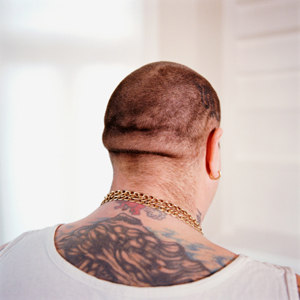Gold has long been regarded as a symbol of opulence, a shimmering token that enchants with its luster and allure. Whether adorning the fingers as a wedding band or draping delicately around the neck, gold has been celebrated through the ages. Yet, lurking beneath the glimmering surface is a question that sparks intrigue and perhaps even unease: can real gold turn your skin green?
To unravel this mystery, we must traverse the annals of metallurgy and skin chemistry. At first glance, gold seems impervious to tarnish and corrosion. This precious metal is indeed one of the most non-reactive elements known to mankind. But before you lose yourself in fantasies of solid gold chains basking on your skin, let’s probe deeper into the alloying world of gold.
Much of what we wear isn’t pure gold; rather, it’s a concoction, a blending of metals that often include copper, nickel, or silver. This alchemical dance is what gives us the various karat measurements—14K, 18K, 24K—where the “K” denotes the purity of the gold. Pure gold is 24K, but its malleability makes it unsuitable for crafting everyday jewelry. Thus, jewelers introduce other metals to provide strength and durability. Copper, in particular, adds a warm hue that many find aesthetically pleasing, but it also plays a pivotal role in the skin-color transformation that some unwitting wearers experience.
Picture this: your skin is like a finely tuned instrument, resonating with the chemicals that come in contact with it. When gold jewelry is worn against this canvas, the metal may react with the skin, particularly if it has been alloyed with copper. This is where the plot thickens—copper is notorious for its chemical reactivity, especially in the presence of moisture and acids produced by our skin. If you happen to perspire, engage in a vigorous workout, or even just have naturally acidic skin, the copper can leach out, forming verdigris—a greenish compound often seen on aged copper roofs and statues.
Now, one might wonder—why does this happen to some and not others? Herein lies the beguiling nature of human physiology. Certain individuals, particularly those with sensitive skin, may find themselves more susceptible to this phenomenon. Factors such as skin pH, hydration levels, and even dietary habits can dramatically influence whether or not you’ll sport an unexpected green hue after a day spent enchanted by the glitter of your gold accessories.
Interestingly, the allure of gold and the darker specter of skin discoloration are like the double-faced Roman god Janus—two sides of the same coin. One side offers beauty, elegance, and timeless appeal; the other, a potential embarrassment that can leave you questioning your fashion choices. However, fret not! The green tattoo is hardly a curse of death; it’s a mere annoyance that can be easily remedied.
For those who find themselves victims of the infamous green stain, there are remedies aplenty. A gentle cleanser can whisk away the verdigris and restore your skin to its natural tone. To prevent future occurrences, opting for higher karat gold can be beneficial, as the lesser amount of alloying metals reduces the likelihood of a negative reaction. Alternatively, consider wearing a barrier—a thin layer of clear nail polish or skin lotion can create a shield that mitigates contact between your skin and the gold.
In the grand tapestry of jewelry, the enchantment of gold remains steadfast, undeterred by the occasional green indiscretion. Gold jewelry represents not just style but also our connection to history and culture. It tells tales of civilizations past and adorns the present with a touch of the eternal. Yet, this enchantment is undeniably tinged with the complexities of chemistry—an elegant reminder that sometimes, beauty may have a price.
When you think about it, wearing gold is much like engaging in a deliciously complicated romance. You’re drawn in by its beauty and richness, yet this love affair can come with a few quirks—green stains included! It reminds us that even the most cherished objects in our lives can carry hidden complexities. Embracing these quirks can deepen our appreciation for these items, transforming moments of embarrassment into tales of life that we carry with us, like cherished memories.
So, the next time you slip on that pair of gold hoop earrings or clasp a necklace around your neck, remember the intricate dance of elements beneath their gleaming surface. Appreciate their beauty, but be aware of their nature. After all, in a world of fleeting trends and fashion faux pas, it’s the stories and experiences we accumulate that define our unique style—and perhaps the fleeting moments of unexpected green will become just another chapter in your personal fashion narrative.
In conclusion, while real gold in its pure form is unlikely to turn your skin green, the alloys mixed with it might. Your choice of gold jewelry can be an experience of both beauty and a lesson in chemistry, reminding us that every piece we wear tells a story—one of elegance, allure, and, yes, the occasional stroke of green!
